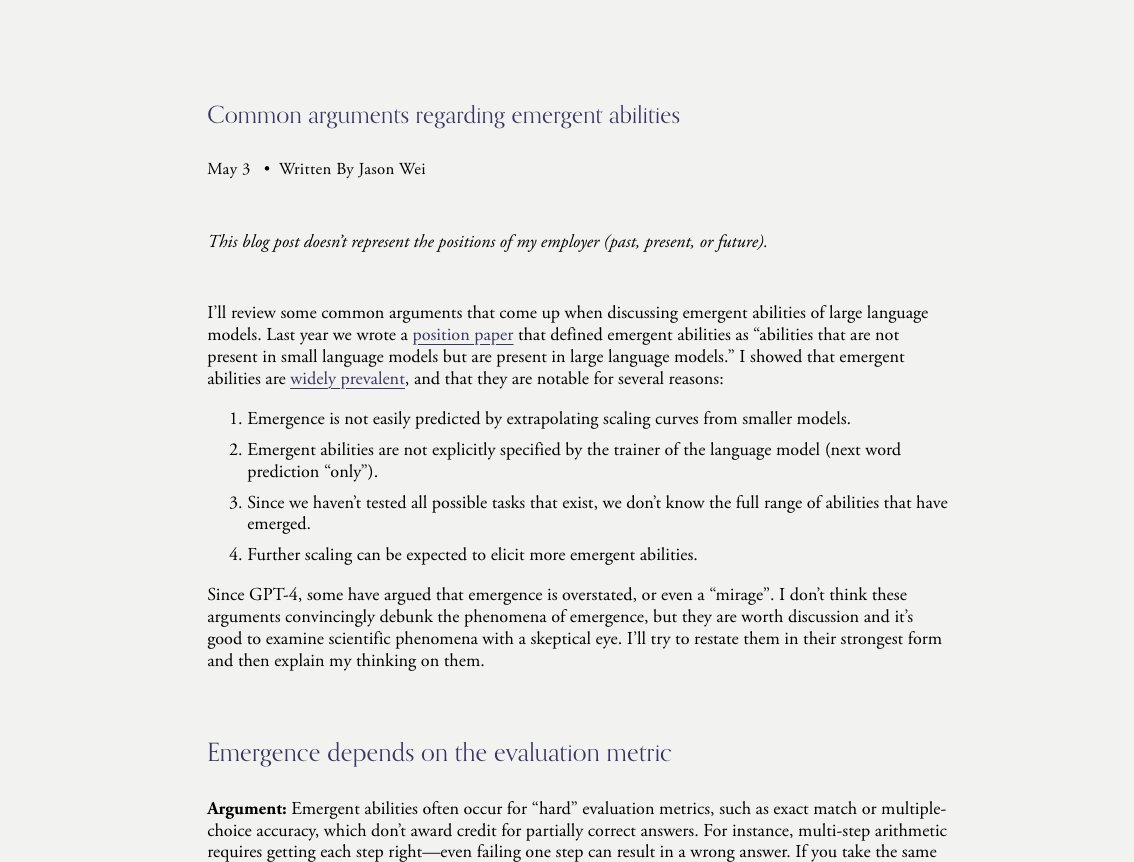A recent clarity that I gained is viewing AI research as a “max-performance domain”, which means that you can be world-class by being very good at only one part of your job. As long as you can create seminal impact (e.g., train the best model, start a new paradigm, or create widely adopted benchmarks), it doesn’t matter if you’re incompetent at adjacent skills. For example, I have seen game-changing AI researchers have horrendous presentation skills, terrible political awareness, and who never think about their career progression. Heck, I even know a top AI researcher who probably wouldn’t pass a basic coding interview. But it doesn’t matter. Exceptional ability at a single thing outweighs incompetence at other parts of the job.
In max-performance domains, you don’t even need to be good at your one thing in a consistent way. An AI researcher can have tens of failed projects per year and still be successful if they produce a seminal work every few years. The metric is the best five works in your career, not the average.
A dangerous thing in max-performance domains is placing too much emphasis on role models. That’s because you don’t know whether you’re mimicking the good characteristics or not. For example, a top AI researcher can make a bad political move that turns out OK for them because of who they are. Or they can make a bold, unsubstantiated statement and expect other people to listen. But if anyone else had done the same thing, the outcome would be opposite.
Another way to view max-performance domains is that they have exponential upside and very little downside. That’s why interviews are especially useless in domains like AI research, because they tend to severely punish mistakes and don’t capture exponential value. An RL expert doesn’t need to know how SVMs work and probably hasn’t thought about it in years. A top AI infra engineer might lack basic knowledge about post-training data practices.
In my view it’s a luxury to work in a max-performance domain. Failure is allowed and stress is usually self-imposed. A thousand years ago, very few humans worked in max-performance domains, but now the opportunity is more available. Technology may have played a role in this shift, and with the progression of AI, hopefully more of humanity can move into max-performance domains.
(If you're wondering about what an example of a non-max-performance domain would be, it's any career where you must have both strengths and also basically no weaknesses. For example, a defender in soccer might cost their team the entire game with a single mistake. A piano player must master all parts of their concerto well, not just a single part.)
In max-performance domains, you don’t even need to be good at your one thing in a consistent way. An AI researcher can have tens of failed projects per year and still be successful if they produce a seminal work every few years. The metric is the best five works in your career, not the average.
A dangerous thing in max-performance domains is placing too much emphasis on role models. That’s because you don’t know whether you’re mimicking the good characteristics or not. For example, a top AI researcher can make a bad political move that turns out OK for them because of who they are. Or they can make a bold, unsubstantiated statement and expect other people to listen. But if anyone else had done the same thing, the outcome would be opposite.
Another way to view max-performance domains is that they have exponential upside and very little downside. That’s why interviews are especially useless in domains like AI research, because they tend to severely punish mistakes and don’t capture exponential value. An RL expert doesn’t need to know how SVMs work and probably hasn’t thought about it in years. A top AI infra engineer might lack basic knowledge about post-training data practices.
In my view it’s a luxury to work in a max-performance domain. Failure is allowed and stress is usually self-imposed. A thousand years ago, very few humans worked in max-performance domains, but now the opportunity is more available. Technology may have played a role in this shift, and with the progression of AI, hopefully more of humanity can move into max-performance domains.
(If you're wondering about what an example of a non-max-performance domain would be, it's any career where you must have both strengths and also basically no weaknesses. For example, a defender in soccer might cost their team the entire game with a single mistake. A piano player must master all parts of their concerto well, not just a single part.)
• • •
Missing some Tweet in this thread? You can try to
force a refresh








